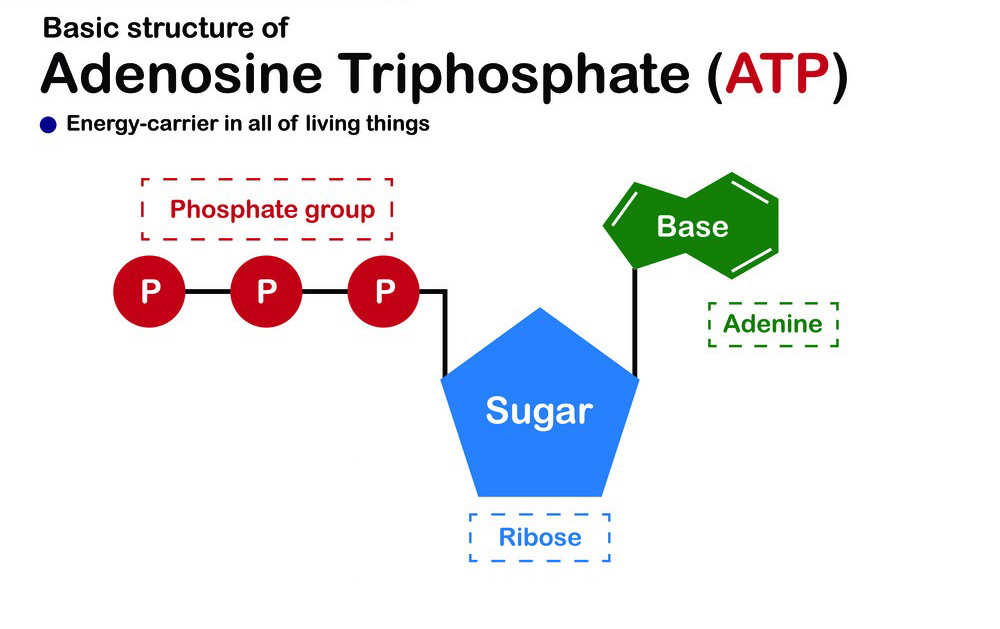Adenosine Triphosphate (ATP) is a molecule that plays a crucial role in the energy transfer within cells. It serves as the primary energy currency of the cell, storing energy obtained from food and releasing it when needed for various cellular processes. Here are the pros and cons of ATP:

Pros of Adenosine Triphosphate (ATP):
Energy Currency: Adenosine Triphosphate is often referred to as the “energy currency” of the cell because it can readily release energy when needed. This immediate availability of energy makes it essential for powering various cellular functions.
Universal Energy Source: Adenosine Triphosphate is used as an energy source in almost all living organisms, from simple bacteria to complex multicellular organisms. Its universality ensures a consistent energy transfer mechanism across diverse life forms.
Quick Energy Release: Adenosine Triphosphate can be rapidly broken down into ADP (Adenosine Diphosphate) and inorganic phosphate, releasing energy almost instantly. This quick energy release is crucial for high-energy-demanding processes like muscle contractions and nerve impulses.
Energy Transfer: Adenosine Triphosphate transfers energy through cells, allowing energy generated in one part of the cell to be utilized in another part, ensuring efficient energy distribution throughout the organism.
Cellular Work: Adenosine Triphosphate powers a wide range of cellular processes, including protein synthesis, active transport of molecules across cell membranes, and mechanical work like muscle contraction.
Cons of Adenosine Triphosphate (ATP):
Instability: Adenosine Triphosphate is a relatively unstable molecule. Its phosphate bonds are high-energy bonds and can be easily broken down. As a result, ATP needs to be continuously generated within the cell to meet its energy demands.
Limited Storage: Cells can only store a small amount of Adenosine Triphosphate at any given time. Consequently, cells need to continually produce ATP to maintain energy levels, requiring a constant supply of nutrients and oxygen.
Production Costs: The process of Adenosine Triphosphate synthesis (cellular respiration) requires energy and specific enzymes. Therefore, the production of ATP itself consumes energy and resources.
Dependency on Oxygen: The most efficient way to produce Adenosine Triphosphate is through aerobic respiration, which requires oxygen. In the absence of oxygen, cells can still produce ATP through anaerobic respiration, but it is less efficient and generates lactic acid as a byproduct.
Waste Production: The breakdown of ATP into ADP and inorganic phosphate creates waste products, which need to be efficiently removed from the cell to prevent accumulation and potential disruption of cellular processes.
In conclusion, Adenosine Triphosphate is a crucial molecule that enables cellular energy transfer and supports various essential processes. However, its instability, limited storage capacity, and dependence on oxygen for efficient production are some factors that come with trade-offs. Nonetheless, the advantages of ATP outweigh the drawbacks, making it an indispensable component of life on Earth.
